Cultivating an urban garden at home is increasingly possible with the new products that brands launch, designed specifically for small spaces. In this tutorial we will tell you some essential tricks to cultivate an urban garden from scratch. We start from a small wooden orchard and we do everything step by step to finish with our prepared home garden. You will need substrate, compost and fertilizer. Eager to start?
When was the last time you cooked with freshly cut basil, thyme or mint? At Handfie we propose you to cultivate an urban garden at home. You can start with a small growing table, the aromatic plants that you like the most and if it hooks you -I’m sure it will!-, expand your home garden as much as you want and can for space. The tricks that we tell you in this tutorial are key to growing at home successfully and you need only 3 things in addition to the growing table and the substrate: compost, fertilizer and a sprayer. So, with all the gardening tools ready, let’s get started?

1. Assemble the cultivation table for the garden
To start cultivating your urban garden you have to choose a support in which to plant it. You can build the garden yourself -for example, with the tutorial on the urban garden with a pallet that we did in Handfie some time ago-, or you can buy a cultivation table like the one in this tutorial. In this case, we have chosen a wooden garden with 3 spaces, for the ground. Specifically, this urban garden table model is called Pomelo and can be assembled without the need for tools. They sell it at Optimus hardware stores.
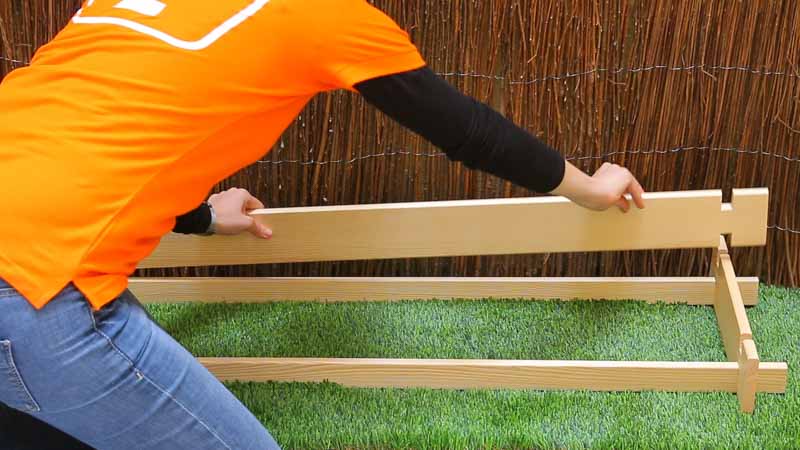
Once the wooden structure is built, we must line the interior with a geotextile mesh. This type of mesh favors water drainage and on this wooden table, it collects the earth and prevents it from escaping through the corners of the wood. The geotextile mesh can be placed with a stapler.
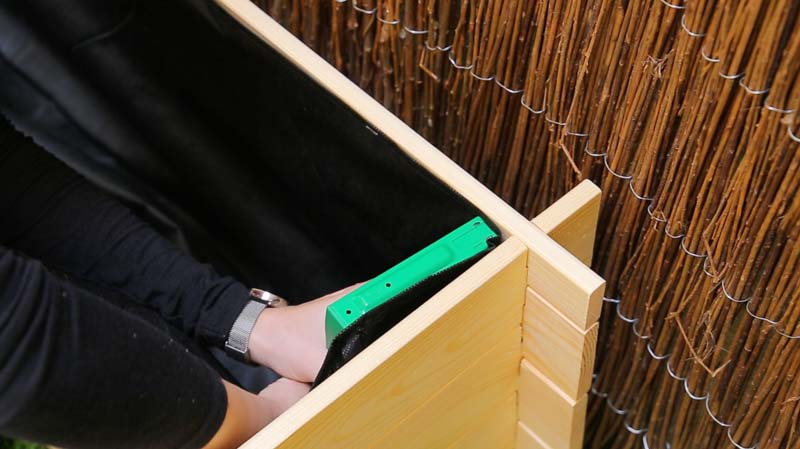
2. Use a quality substrate to grow an urban garden.
First trick to start with your urban garden. Avoid bad substrates! There are more and more substrates in bazaars or other stores that are of very low quality. A poor quality substrate means that it will have fewer nutrients and will almost certainly contain more impurities. Another typical characteristic of poor substrates is that it dries faster than normal because it does not collect water well. For an urban garden, use a good substrate. Your aromatic plants or vegetables will appreciate it.
Fill the container with the substrate and flatten the soil a bit so that there is not much air left when planting.
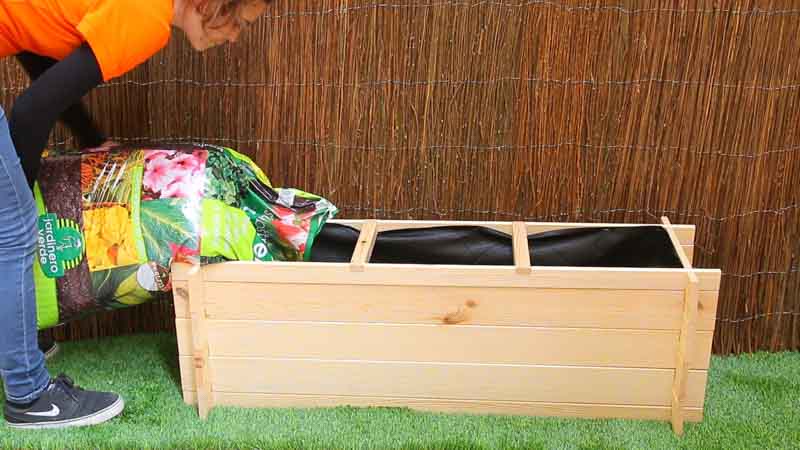
3. Mix liquid compost and spray into the soil before planting
To nourish the substrate, we have used a universal liquid fertilizer. Generally, the proportions that you should use is 1 capful of fertilizer diluted in 1 liter of water. To spread the compost evenly, use a sprayer.
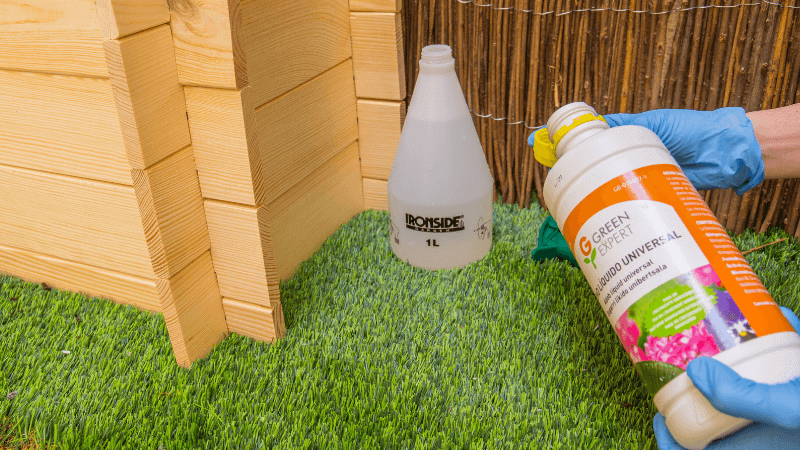
Spray the surface of the substrate well to feed the soil with nutrients. Like people, plants require a good diet, so do not skip this step if you want rich aromatics.
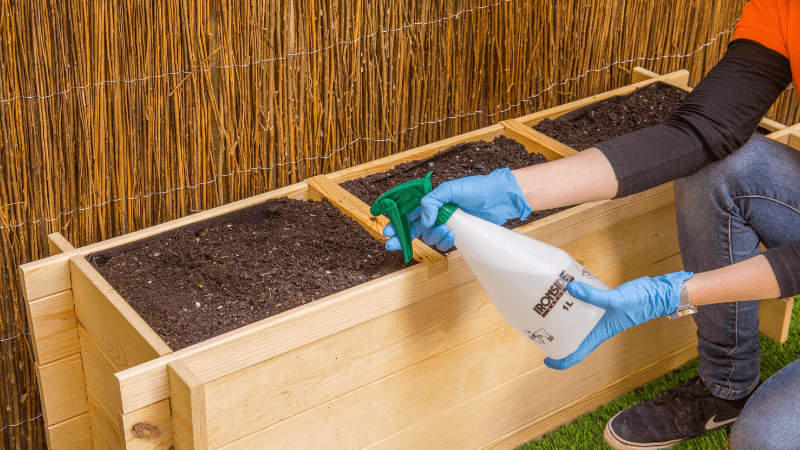
To distribute the fertilizer throughout the land, remove the substrate with the help of a shovel.
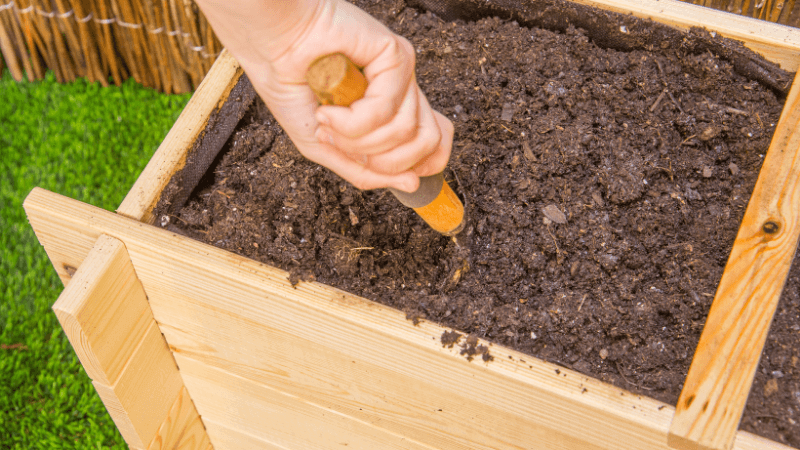
4. Install the aromatic plants in the garden
If you have chosen to buy the plants instead of planting the seeds -obviously, it will take a while for them to grow-, take them out of the pot they came in carefully. Before planting the aromatics in the garden, slightly separate the roots and the soil and introduce them into the soil. To plant them, first make a hole in which the set of roots of the plant will fit.
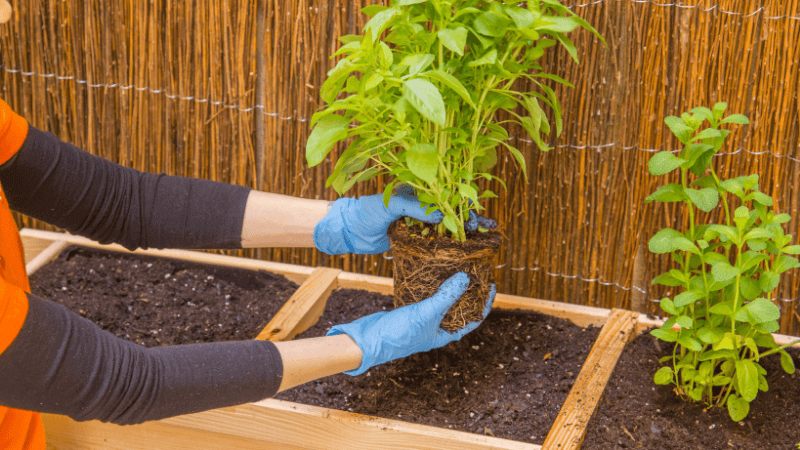
Crush the soil a little so that the plant is established. If you need it, pour a little more substrate to fill. It is good to leave the substrate 1 centimeter from the edge so that when watering the soil does not overflow.

5. Mix and spray the fertilizer on the leaves of the plants of your new urban garden
With the fertilizer, mix it with the same proportions as with the liquid fertilizer. 1 capful diluted in 1 liter of water. Shake the sprayer and spray the fertilizer on the leaves of your aromatics. The fertilizer will also provide important nutrients for the development of your plants.

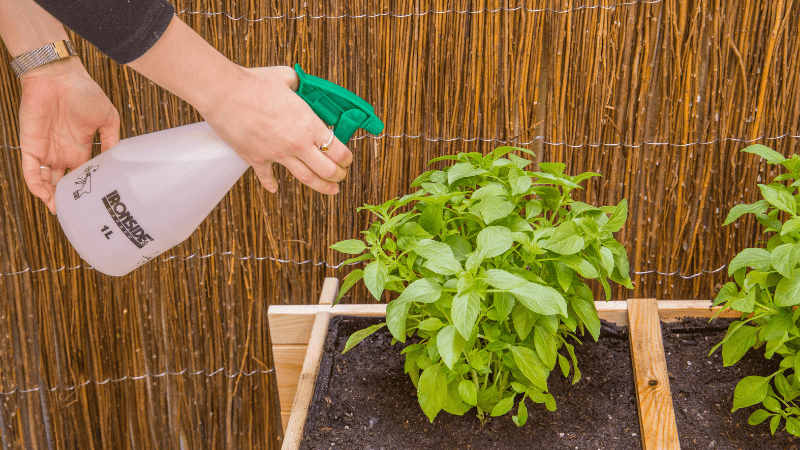
Very easy, right?

You will not be able to deny that the result of the garden is very decorative. But also, and more importantly, from now on you can enjoy cooking aromatics, collected just a few meters from your kitchen. A culinary delight, and very economical!

